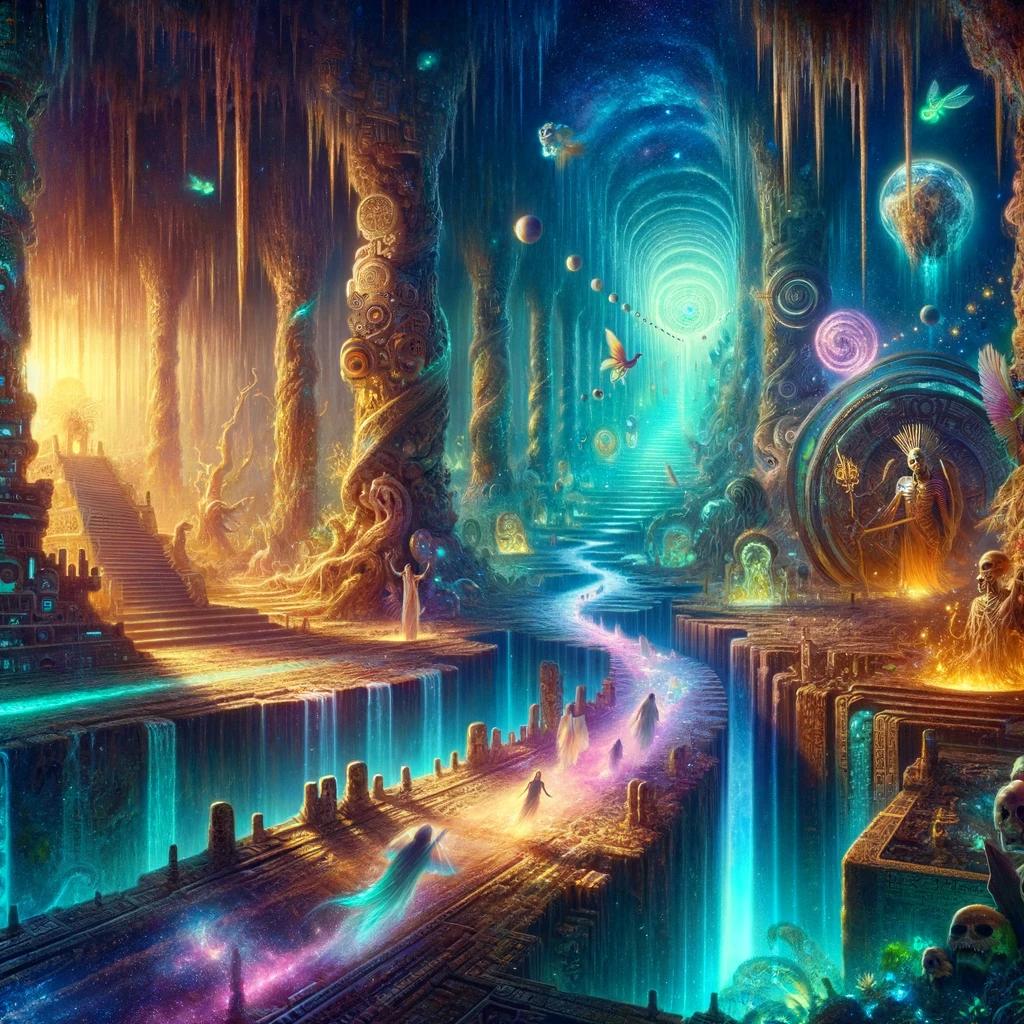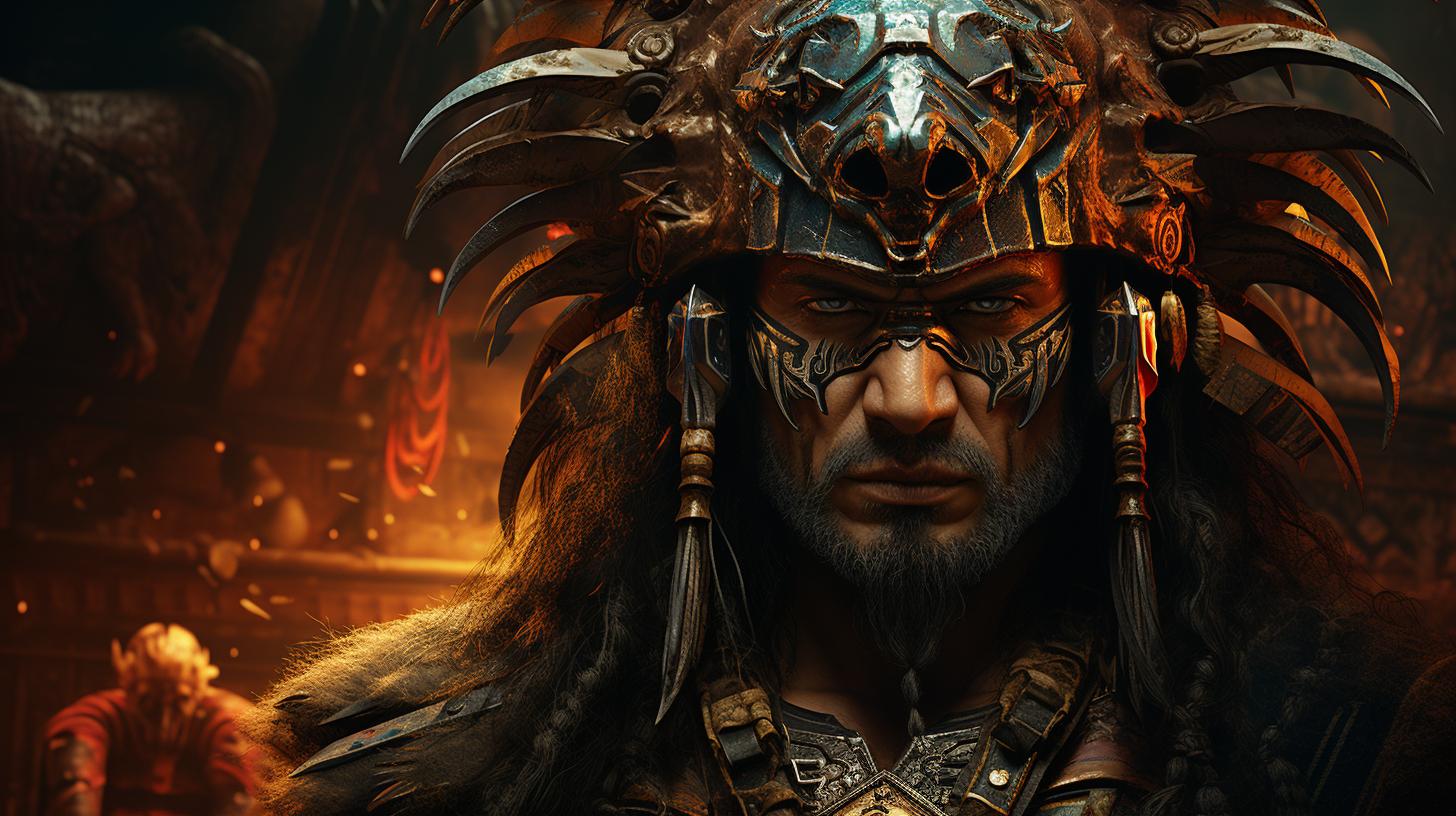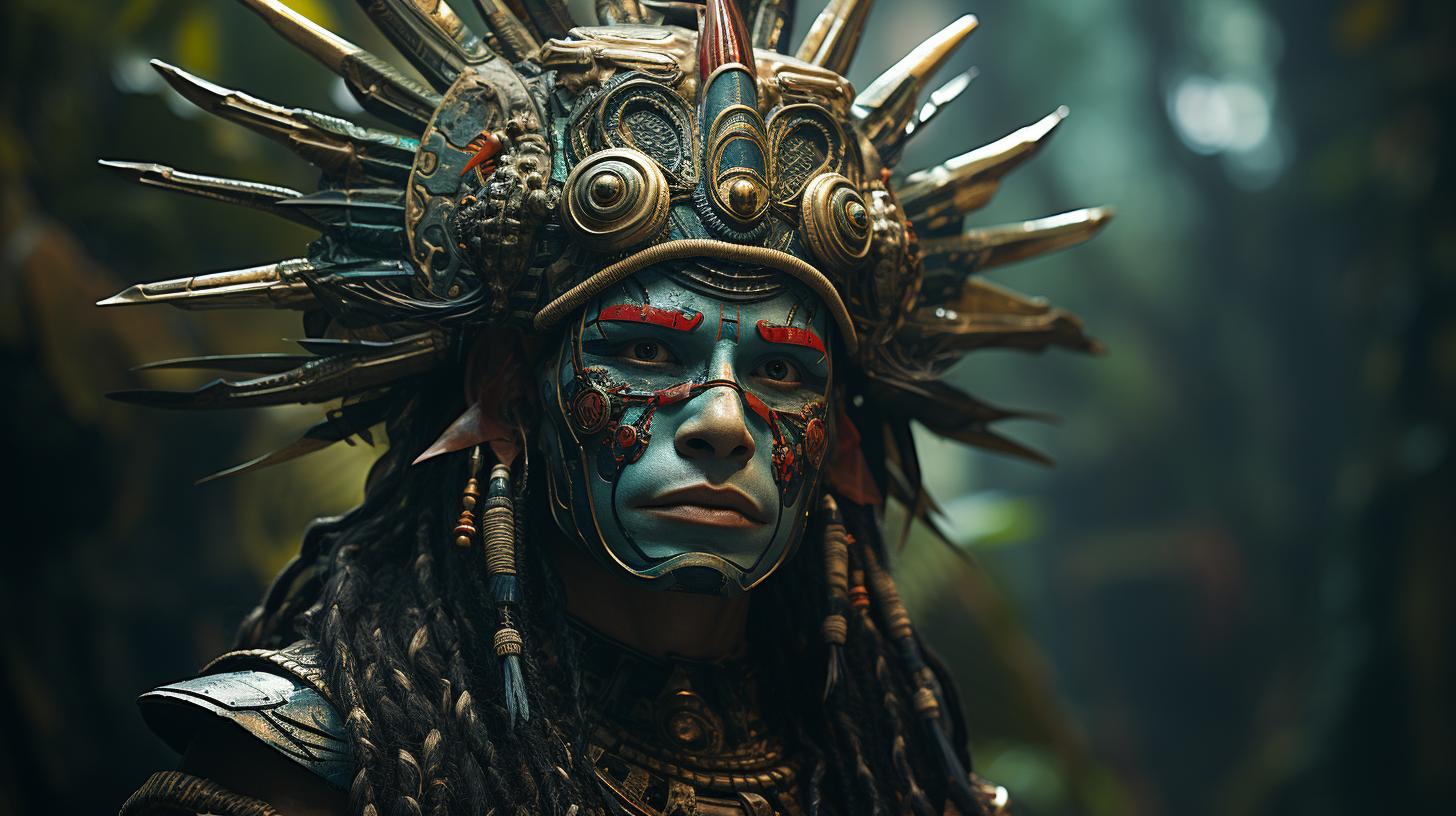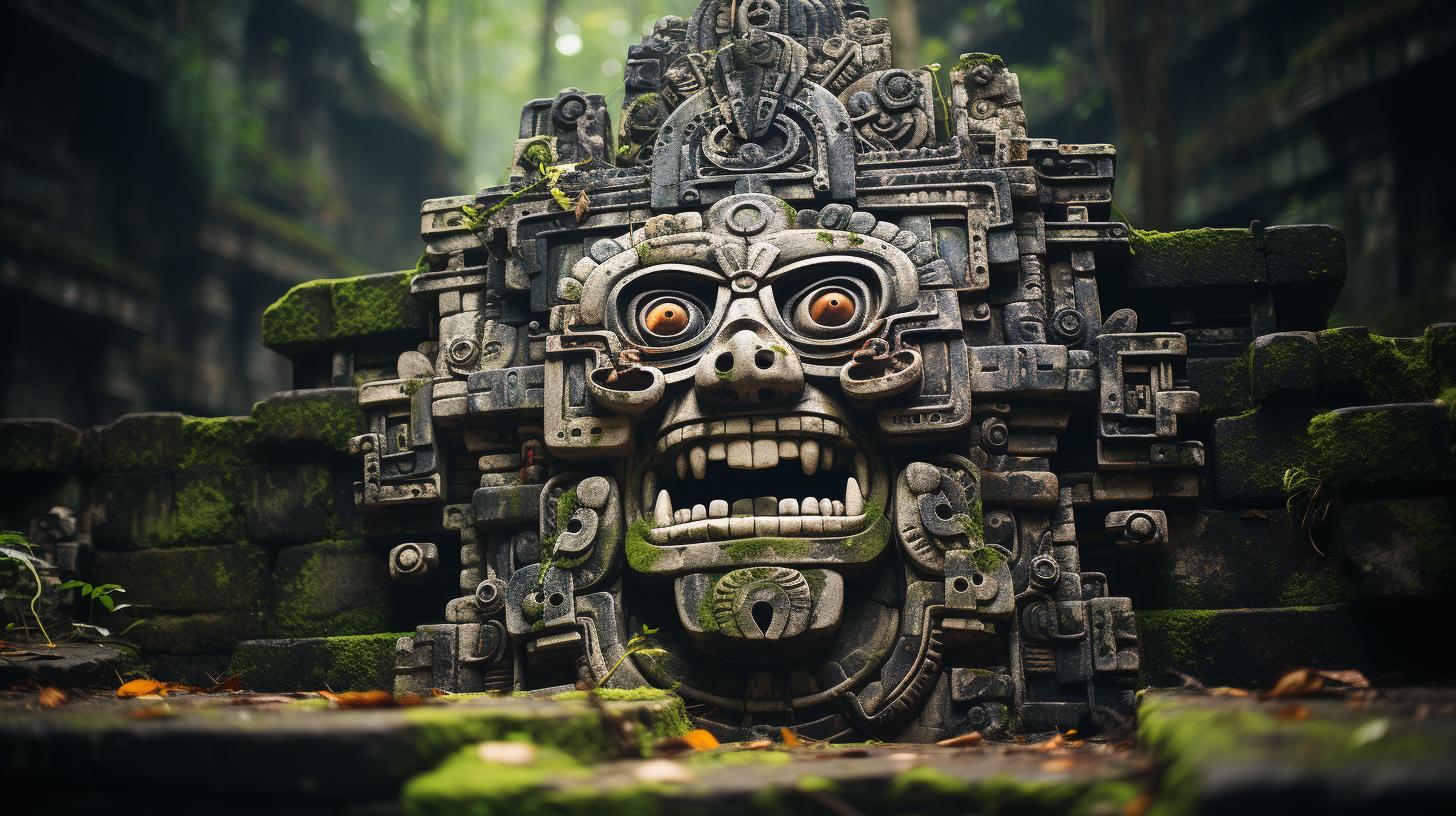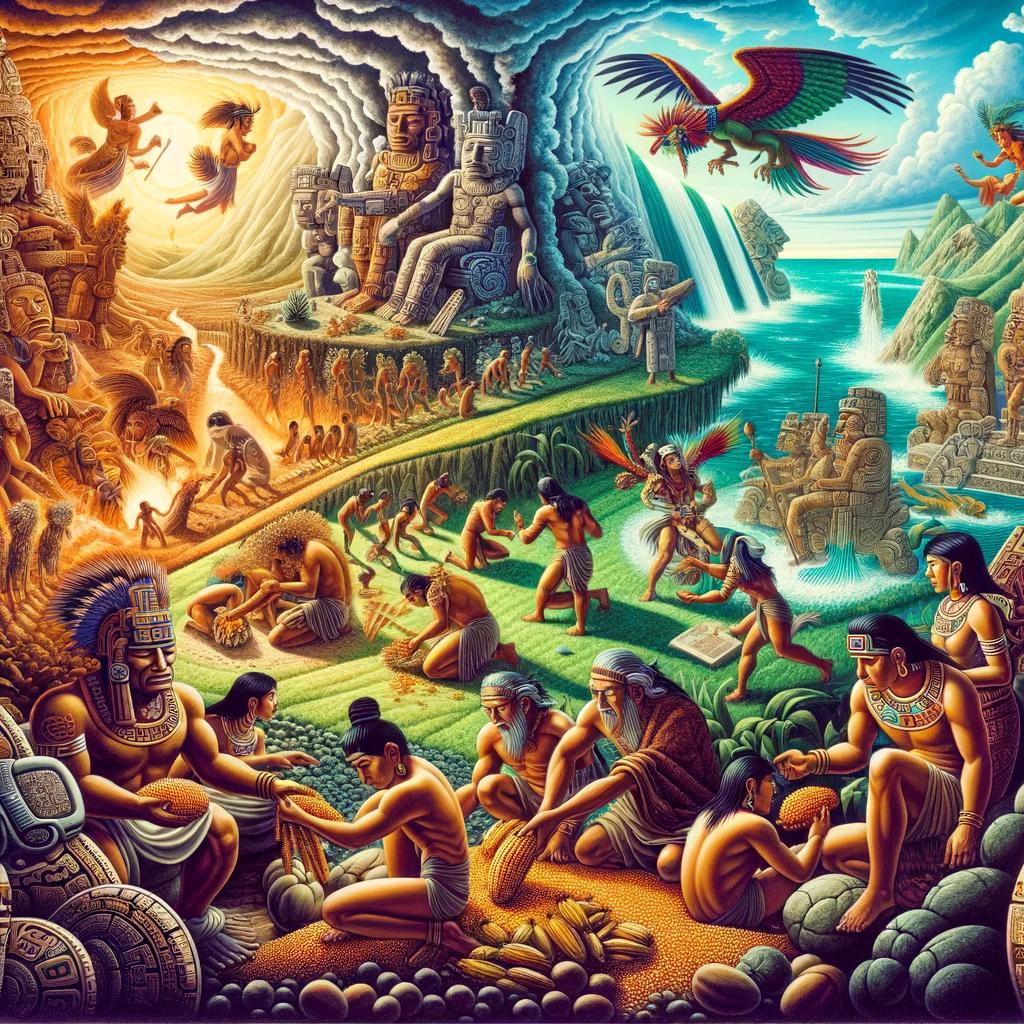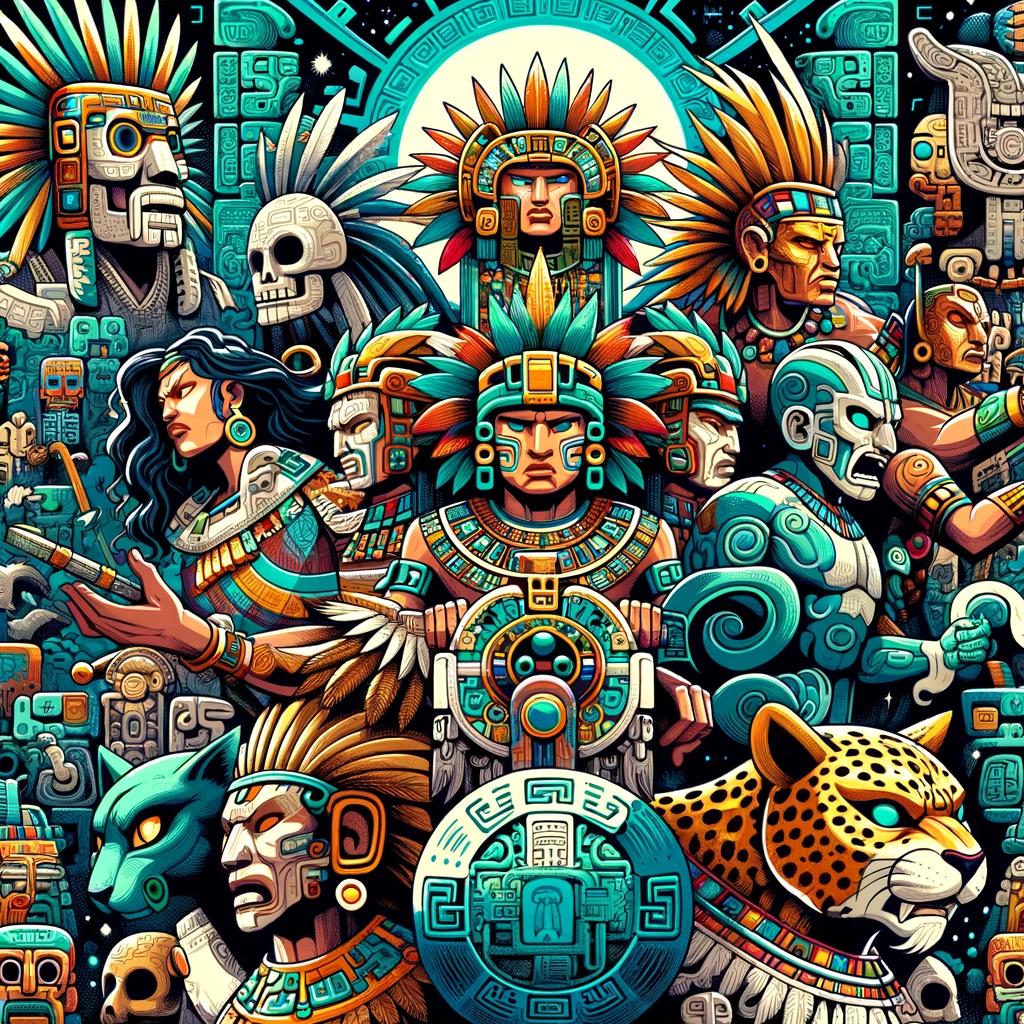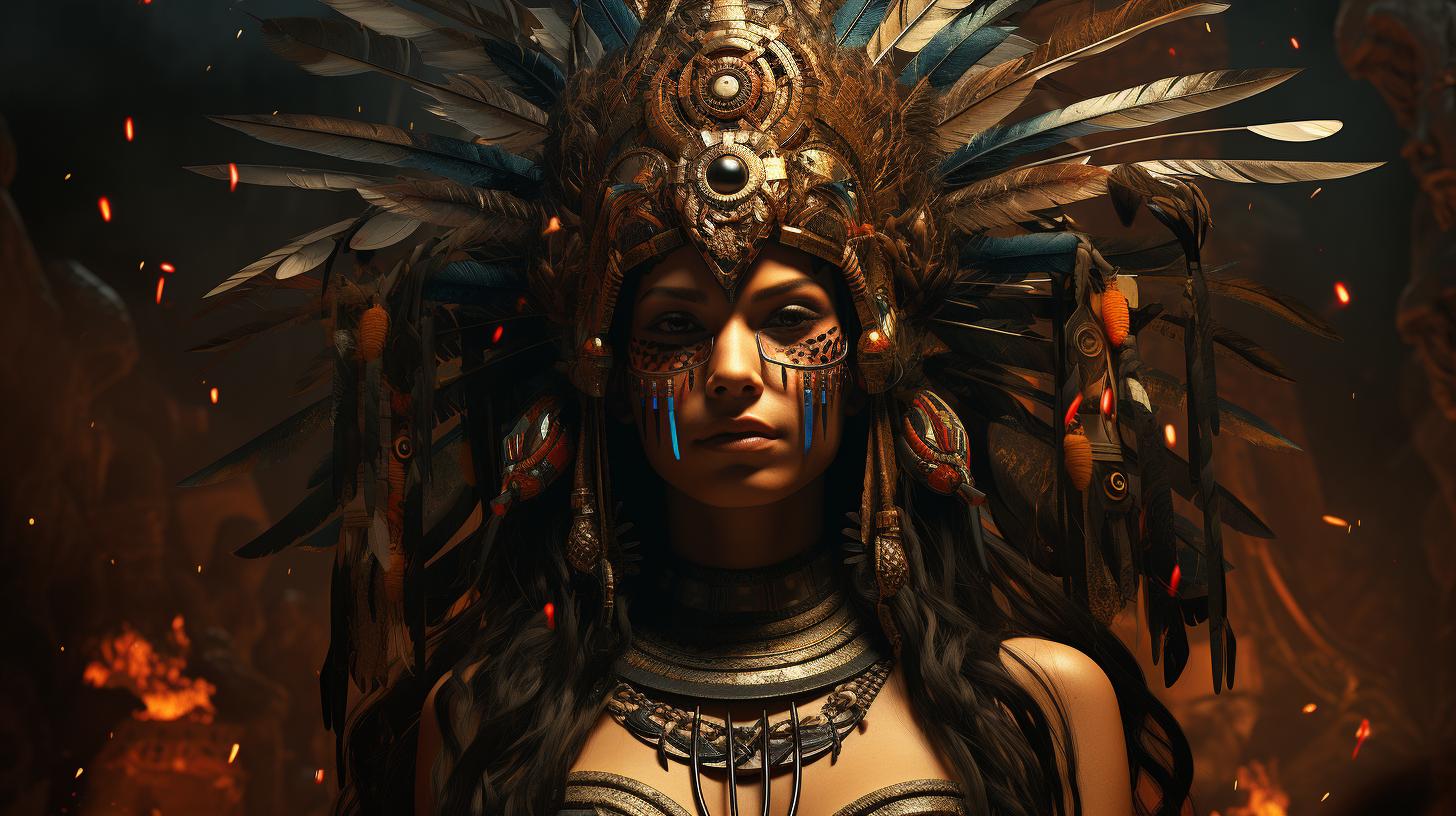Mayan Mythology Afterlife: Beliefs and Rituals Revealed
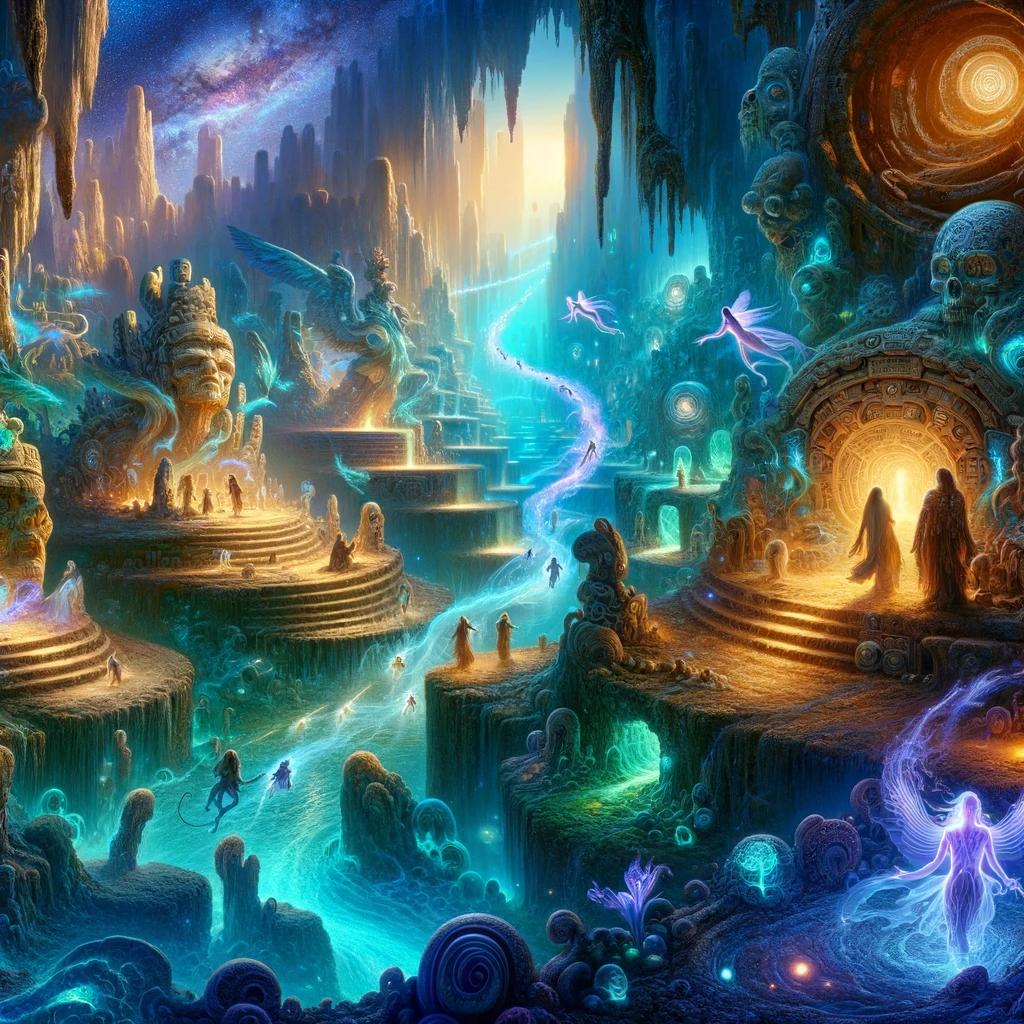
Mayan Mythology Afterlife explores the beliefs and rituals surrounding the afterlife in the ancient Mayan culture. Discover the significance of afterlife beliefs in Mayan society and their cultural influences.
Delve into the underworld of Xibalba, the Mayan realm of the dead, and learn about the gods and deities associated with it. Explore death rituals, the role of ancestors, and the art and symbolism depicting the afterlife.
Trace the evolution of Mayan afterlife beliefs over time and uncover connections with other Mesoamerican cultures. Explore contemporary perspectives and the lasting legacy of Mayan afterlife beliefs in our modern society.
Overview of Mayan Mythology Afterlife
Mayan Mythology Afterlife delves into the fascinating world of the Mayan people’s beliefs regarding the afterlife. This comprehensive overview provides insights into the rich mythological traditions that shaped their understanding of life beyond death.
It explores various aspects of Mayan mythology, including their cosmological views, religious practices, and cultural influences.
Introduction to Mayan Mythology
The introduction to Mayan Mythology sets the stage for a deeper exploration of their beliefs surrounding the afterlife. It acquaints readers with key concepts, such as the intricate pantheon of Mayan gods, the symbolic significance of celestial bodies, and the diverse mythological narratives that shaped their worldview.
Significance of Afterlife Beliefs in Mayan Culture
The Mayan people held profound beliefs about the afterlife, and understanding the significance of these beliefs is crucial to appreciating their cultural and spiritual practices. This section highlights the central role that afterlife beliefs played in the Mayan society, influencing various aspects of daily life, including religious ceremonies, societal hierarchies, and approaches to death and mourning.
Cultural Influences on Mayan Mythology Afterlife
Mayan mythology was not developed in isolation but was influenced by the cultural exchanges and interactions with neighboring Mesoamerican societies. This section explores the cultural influences on Mayan afterlife beliefs, examining the reciprocal impact between the Mayas and other civilizations in the region, such as the Aztecs and the Olmecs.
The Underworld in Mayan Mythology
Xibalba: The Mayan Underworld
In Mayan mythology, Xibalba is the realm of the dead, known as the Mayan underworld. It is a place of darkness and mystery, inhabited by powerful gods and spirits. The Mayans believed that Xibalba was a treacherous and dangerous place, full of trials and tests for the souls of the deceased.
Description and Characteristics of Xibalba
Xibalba is described as a vast underground realm, composed of nine levels or layers. Each level has its own unique challenges and obstacles that the souls must overcome. These challenges can include deadly rivers, thorny pathways, and supernatural creatures.
The Mayans believed that Xibalba had various regions and landmarks, such as the Place of Cold, the Place of Fear, and the Place of Jaguars. These regions were associated with different gods and had specific purposes within the underworld.
Gods and Deities Associated with the Mayan Underworld
The Mayans attributed the rulership of Xibalba to the Lords of the Underworld, known as the Death Gods. These gods were often depicted as skeletal figures or fearsome creatures, representing the power and authority they held over the afterlife.
- Xibalba – The Ruler of Xibalba and the Keeper of Souls.
- Vucub-Kame and Hun-Came – The Principal Death Gods.
- One Death and Seven Death – The Death Gods responsible for specific challenges in Xibalba.
These deities held dominion over different realms within Xibalba and played a crucial role in the trials and tests that the souls had to face in their journey through the afterlife.
Their presence and influence in Mayan mythology illustrate the importance the Mayans placed on the afterlife and their belief in the existence of Xibalba as a distinct realm for the souls of the departed.
Beliefs and Rituals Surrounding Death in Mayan Mythology
In Mayan Mythology, death held great significance and was intertwined with elaborate beliefs and rituals. The Mayans had a complex understanding of death, which encompassed the importance of human sacrifice, elaborate death rituals, and the role of ancestors in their afterlife beliefs.
Importance of Human Sacrifice in Mayan Culture
One of the most striking aspects of Mayan afterlife beliefs was the importance placed on human sacrifice as a means to appease the gods and ensure a successful passage to the afterlife.
Human sacrifices were often made during important rituals and ceremonies, and it was believed that the life force of the sacrificed individuals would be transferred to the gods.
Death Rituals and Funeral Practices
The Mayans conducted intricate death rituals and funeral practices to honor the deceased and guide their transition into the afterlife.
These rituals included elaborate burial ceremonies, offerings of food and possessions, and sometimes even the inclusion of animal and human sacrifice. The rituals aimed to ensure a smooth journey for the departed souls and maintain the connection between the living and the dead.
Role of Ancestors in Mayan Afterlife Beliefs
The Mayans held a deep reverence for their ancestors and believed in their continued existence and influence in the afterlife. Ancestors were seen as intermediaries between the living and the gods, and their guidance and support were sought through rituals and offerings.
The Mayans constructed temples and altars to honor their ancestors, and believed that by maintaining this connection, they could receive their ancestors’ wisdom and protection.
Overall, the belief in the afterlife was deeply ingrained in Mayan Mythology, with a particular emphasis on the importance of human sacrifice, intricate death rituals, and the influential role of ancestors.
These beliefs and rituals shaped the way the Mayans perceived death and provided a framework for navigating the complexities of the afterlife.
Art and Symbolism in Mayan Mythology Afterlife
Art and symbolism played a crucial role in depicting the concepts and beliefs surrounding the afterlife in Mayan mythology. The ancient Maya expressed their understanding of the afterlife through intricate artworks and architectural designs.
Depiction of Afterlife in Mayan Art and Architecture
Mayan art and architecture were heavily influenced by their beliefs in the afterlife. The portrayal of the afterlife in Mayan art often involved intricate scenes depicting the journey of the soul through Xibalba, the Mayan underworld.
Paintings, murals, and sculptures showcased mythical creatures, gods, and deities associated with the realm of the dead.
Mayan architecture also incorporated elements related to the afterlife. Elaborate temples and structures were constructed to honor the gods and serve as entry points to the underworld.
These structures featured intricate carvings and decorations that conveyed the significance of the afterlife in the Mayan culture.
Symbols and Representations of the Underworld in Mayan Artifacts
Mayan artifacts provide valuable insights into the symbolism associated with the underworld in Mayan mythology. Various symbols were used to represent the different realms and deities of the afterlife. These symbols included skull motifs, serpent imagery, jaguar representations, and symbolic colors such as red and black.
Additionally, masks and headdresses depicting deities like the Maize God and Death God were adorned with specific symbols related to the afterlife. These symbols helped convey the importance and complexity of the Mayan beliefs in the afterlife.
- Skull motifs: Symbolized death and served as a reminder of the transient nature of life.
- Serpent imagery: Represented the underworld and its connection to the celestial realm.
- Jaguar representations: Depicted the Mayan deities associated with power, protection, and the afterlife.
- Symbolic colors: Red symbolized blood and sacrifice, while black represented the darkness of the underworld.
Mayan artifacts also showcased scenes of rituals and offerings dedicated to the deceased.
These objects provided a glimpse into the rituals and practices employed to honor and communicate with the ancestors.
In conclusion, Mayan art and symbolism served as powerful mediums for expressing the beliefs and concepts surrounding the afterlife.
Through intricate artworks, architecture, and symbolic representations, the Mayans conveyed their understanding of the journey to the underworld and the significance of honoring the deceased.
Evolution of Mayan Afterlife Beliefs over Time
The Mayan civilization had a rich and complex belief system regarding the afterlife, which evolved over time from the Preclassic period to the Postclassic period.
During the Preclassic period (2000 BCE – 250 CE), the Mayans had a more primitive understanding of the afterlife, focused on ancestral veneration and burial practices.
Changes in Mayan Afterlife Beliefs from Preclassic Period to Postclassic Period
As the Mayan civilization advanced and developed, their belief system surrounding the afterlife also underwent significant changes.
In the Classic period (250 – 900 CE), the Mayans started to develop a more elaborate understanding of the afterlife, influenced by their cosmological beliefs and interactions with other Mesoamerican cultures.
During this time, the Mayans began to associate the afterlife with Xibalba, the Mayan underworld. They believed that Xibalba was a complex realm inhabited by deities and spirits, where the souls of the dead would continue their existence.
This concept of the underworld became a central aspect of Mayan afterlife beliefs.
The Postclassic period (900 – 1521 CE) saw further changes in Mayan afterlife beliefs due to external factors, such as the influence of neighboring cultures like the Toltecs and the arrival of Europeans.
These influences introduced new elements to Mayan afterlife beliefs, including the idea of punishment and reward in the afterlife based on one’s actions in life.
Influence of External Factors on Mayan Afterlife Beliefs
The arrival of the Toltecs and their merger with the Mayans during the Postclassic period brought new religious ideas and practices.
This integration led to the emergence of a syncretic belief system, blending elements of Toltec and Mayan mythology in their understanding of the afterlife.
With the arrival of Europeans in the 16th century, the Mayans were exposed to Christian beliefs, which further influenced their afterlife beliefs.
The concept of heaven and hell became integrated into their existing beliefs, creating a hybrid form of afterlife beliefs that combined indigenous Mayan elements with Christian ideas of salvation and damnation.
Overall, the evolution of Mayan afterlife beliefs over time reflects the dynamic nature of the Mayan civilization and their ability to adapt and incorporate new ideas into their existing belief system.
Through contact with other cultures and the changing socio-political landscape, Mayan afterlife beliefs became more complex and diversified, reflecting the cultural and historical development of the Mayan people.
As we delve deeper into the understanding of Mayan afterlife beliefs, it becomes clear that these beliefs were not static but evolved and transformed over centuries.
The influence of external factors, such as cosmological interactions and cultural exchanges, played a significant role in shaping Mayan afterlife beliefs and adding layers of complexity to their understanding of the journey beyond death.
Connections between Mayan Mythology Afterlife and Other Mesoamerican Cultures
The Mayan mythology of the afterlife exhibits both similarities and differences when compared to other Mesoamerican cultures. These connections provide insights into the shared beliefs and divergent practices surrounding the existence beyond death in the region.
Similarities and Differences in Afterlife Beliefs among Mesoamerican Cultures
- Mesoamerican cultures, including the Maya, shared a common belief in the existence of an afterlife.
- Similarities can be seen in the concept of an underworld, a place where the deceased souls resided.
- Differences emerge concerning the specific deities and rulers of the underworld.
- The Maya believed in Xibalba, while other cultures had their own unique interpretations of the underworld.
- Each culture had distinct rituals, practices, and offerings associated with honoring the deceased and ensuring their smooth transition into the afterlife.
Cultural Exchange and Influence on Mayan Afterlife Beliefs
The Mayan civilization engaged in extensive cultural exchange with neighboring Mesoamerican societies, which influenced their afterlife beliefs in various ways.
The influence of Teotihuacan, a powerful city-state in ancient Mexico, can be observed in Mayan iconography and religious practices. This exchange introduced new deity representations, architectural motifs, and concepts to Mayan mythos.
The Toltecs, known for their prowess in art, literature, and war, also exerted an influence on the Mayan worldview. Their presence and ideas transformed Mayan art, architecture, and religious ceremonies, including those related to the afterlife.
The interaction with these cultures enriched Mayan afterlife beliefs, leading to syncretism and the incorporation of new elements into their existing mythology. This cultural exchange expanded the scope of Mayan afterlife concepts, providing a broader understanding of the mythical realm beyond death.
- Shared artistic motifs, such as serpent imagery, depict symbolic connections between different Mesoamerican belief systems.
- The practice of human sacrifice, performed by various Mesoamerican cultures, influenced Mayan rituals associated with the afterlife.
- Interactions between Mayan rulers and neighboring city-states shaped the political and religious aspects of Mayan afterlife doctrines.
- The exchange of cultural ideas fostered innovation and the development of unique expressions of afterlife beliefs within Mayan society.
The connections between Mayan mythology of the afterlife and other Mesoamerican cultures highlight the interconnectedness of ancient civilizations in the region.
These influences contributed to the rich tapestry of beliefs and practices surrounding the journey to the realm beyond, shaping the understanding of the afterlife in Mayan society.
Contemporary Perspectives on Mayan Mythology Afterlife
Modern times have witnessed a revival and preservation of Mayan afterlife beliefs, reflecting the enduring cultural significance of this mystical tradition.
Revival and Preservation of Mayan Afterlife Beliefs in Modern Times
The resurgence of interest in Mayan mythology afterlife has led to increased efforts in understanding, studying, and documenting the ancient beliefs. Scholars, archaeologists, and anthropologists have dedicated their research to uncovering the rich tapestry of Mayan afterlife traditions, shedding new light on the importance of this fascinating aspect of Mayan culture.
Contemporary Mayan communities have played a crucial role in preserving their ancestral knowledge and passing it down through generations. Cultural preservation initiatives, such as language revitalization projects, festivals, and educational programs, aim to ensure that the profound teachings of the Mayan afterlife continue to thrive in the present day.
Impact of Tourism and Globalization on Mayan Afterlife Practices
With the growth of tourism and globalization, the impact on Mayan afterlife practices has been notable. As visitors from around the world immerse themselves in the richness of Mayan history and culture, there has been an increased demand for authentic experiences relating to the afterlife.
While tourism can provide economic opportunities for local communities, it also brings challenges in preserving the integrity and authenticity of Mayan afterlife beliefs. Balancing the commercial appeal of Mayan mythology with the need for cultural respect and accuracy remains an ongoing concern.
Globalization has brought exposure to Mayan afterlife beliefs on a broader scale, allowing for cross-cultural exchange and dialogue. The internet, social media, and international publications have provided platforms for sharing knowledge and fostering a deeper understanding of Mayan mythology.
As we continue to navigate the complexities of the modern world, the contemporary perspectives on Mayan mythology afterlife offer invaluable insights into the enduring allure and significance of this ancient belief system.
Through ongoing research, admiration, and cultural preservation efforts, the vibrant tapestry of Mayan afterlife beliefs will continue to inspire and captivate present and future generations.
After exploring the intricate world of Mayan Mythology Afterlife, it is crucial to summarize the essential aspects of this belief system.
Mayan Mythology, deeply rooted in their ancient culture, presents a complex understanding of the afterlife. From the underworld of Xibalba to the rituals surrounding death, Mayan society held unwavering beliefs about what awaited them beyond life.
Throughout this exploration, we have discovered:
Recap of Mayan Mythology Afterlife
- The significance of afterlife beliefs in Mayan culture and their enduring cultural influences.
- The Mayan underworld, Xibalba, and its description and characteristics.
- The gods and deities associated with the Mayan underworld.
- The importance of human sacrifices and the rituals and funeral practices surrounding death in Mayan mythology.
- The role of ancestors in Mayan afterlife beliefs and their connection to the living.
- The art and symbolism depicted in Mayan artifacts related to the afterlife.
- The evolution of Mayan afterlife beliefs from the preclassic period to the postclassic period, as well as external influences on these beliefs.
- The connections and comparisons between Mayan mythology afterlife and other Mesoamerican cultures.
Significance and Legacy of Mayan Afterlife Beliefs in Modern Society
The significance of Mayan afterlife beliefs extends beyond its ancient roots.
Even in modern society, the legacy of Mayan mythology afterlife continues to influence various aspects:
- The revival and preservation of Mayan afterlife beliefs in contemporary times, particularly in regions with a strong Mayan heritage.
- The impact of tourism and globalization on Mayan afterlife practices, both positive and negative.
These beliefs continue to shape cultural practices, artistic expressions, and spiritual connections for those who honor the tradition of Mayan mythology afterlife.
As we reflect on the intricate and fascinating world of Mayan afterlife, we come to appreciate the enduring legacy it leaves on the modern world.
.

